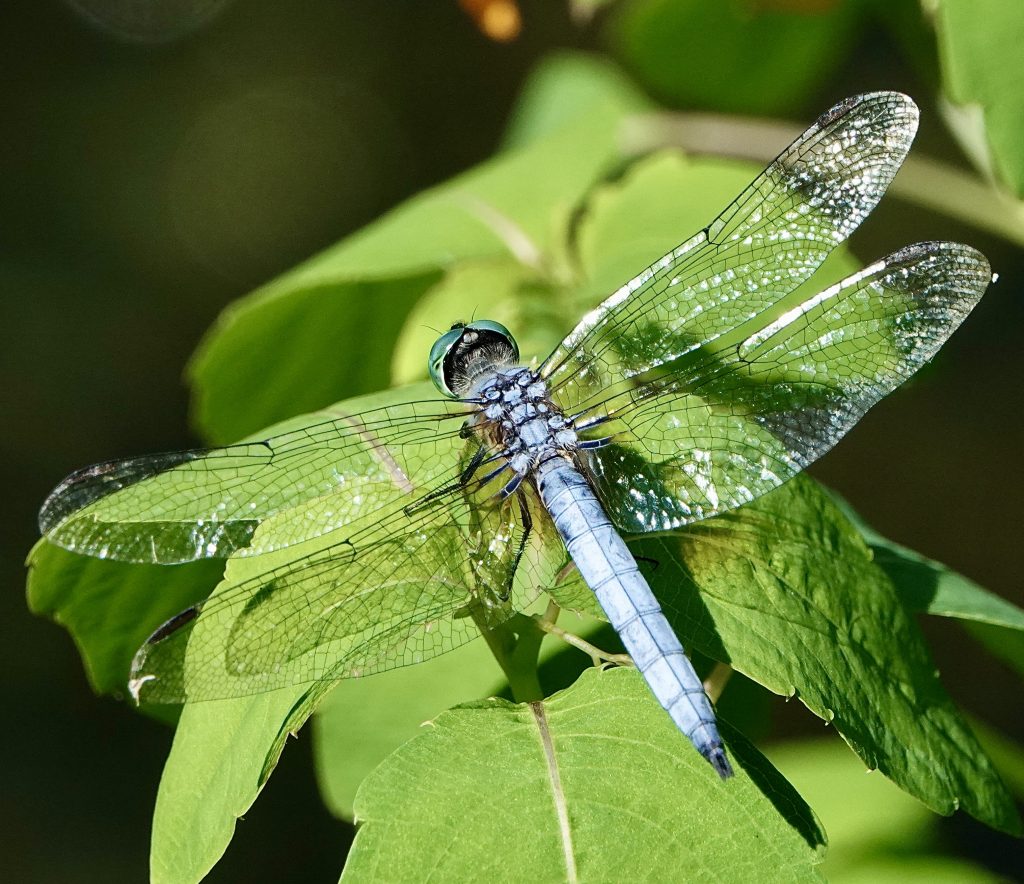
So, I’ll just be upfront and admit that this is a revision of a profile I did when I first started this website. For the first hundred or so profiles I was just whipping them out, choosing quantity over quality. When I went to link the Western Pondhawk profile to this one, I wasn’t satisfied with the way I’d covered the Blue Dashers, and I had no photos of females, so I decided to bring it more inline with what I’ve come to believe the profiles should contain. I doubt I’ll do this revising with many, or even any, of the rest of those first hundred, but this time it seemed the right thing to do.

Pachydiplax longipennis is the sole member of their monotypic genus of skimmers (family Libellulidae). Blue Dashers can be very abundant at times, especially at shallow, weedy lakes and ponds. They are perchers , who like being right above the water, and (unlike Western Pondhawks) are frequently seen obelisking (pointing the abdomen toward the sun to cut down on exposed surface area), and with their wings pointed downward, which also reduces their exposure to direct sunlight.
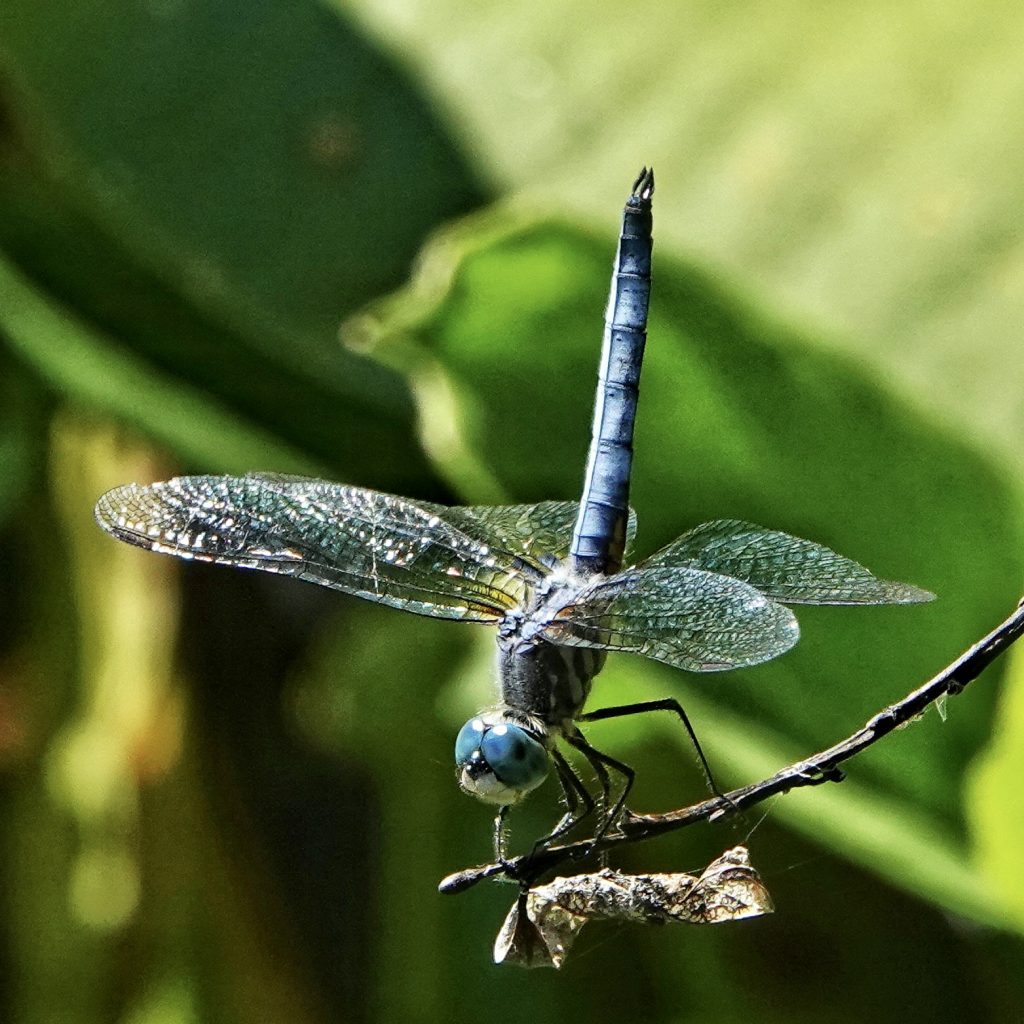
Blue Dashers do not perch on the ground like Western Pondhawks (Erythemis collocata), which is our only other species of small dragonflies with pruinose blue males and green females. They are fairly easy to differentiate in hand because Western Pondhawks have a green face and unmarked thorax, as opposed to the white face and green striped black thorax of Blue Dashers (and male Blue Dashers usually have a very dark final segment of the abdomen, which Western Pondhawks lack, although both this and the thorax markings may be obscured in extremely pruinose Blue Dashers), but it’s not always so easy to see these details from 10’ away. Females and immatures of each species are quite easy to differentiate because the abdomen of Blue Dashers is mostly black with 4 rows of green dashes, and that of Western Pondhawks is predominantly green with a black line running up the center.
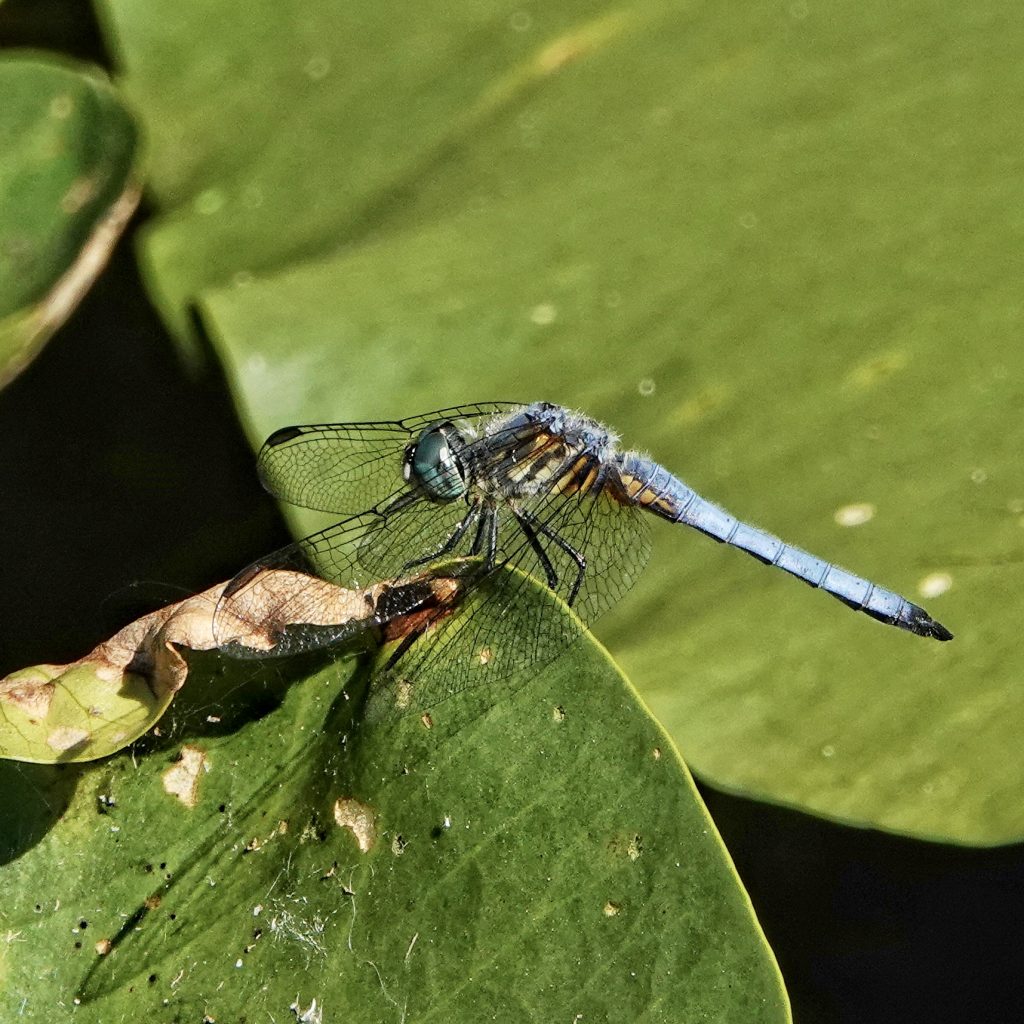
Another helpful tip, especially in photos where they are facing away, and/or you’re dealing with a Blue Dasher male that is completely pruinose, is to look at wing venation. This probably won’t be visible with the naked eye, unless you have the bug in hand, and may not be visible even through binoculars. But with a good, crisp, well cropped photo, you may be able to note that the Blue Dasher has a clear area to the rear of the forewing stigma that is longer than the stigma, and/or that from that clear area toward the base there are only 3 or 4 cells before there is another long, clear space. In Western Pondhawks there is at least one and usually 2 crossveins behind the stigma, and 6-8 (depending on where you start counting) cells before you get to the next extended clear area.

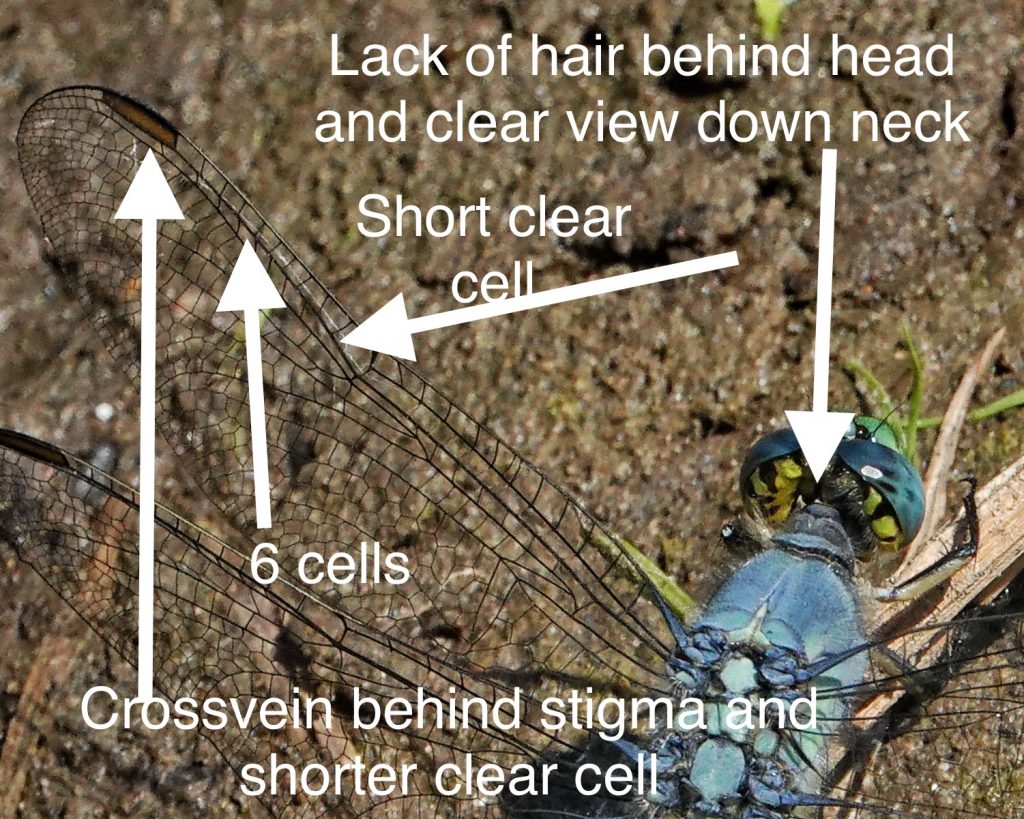
One final identification trait, and one which I’ve resorted to in trying to identify my own less than crisp photos of wing venation (although I must admit that I’ve never seen anyone else mention this), is that Blue Dashers have a ruff of grey green fur that obscures the neck and back of the head, while Western Pondhawks offer a clear view up the neck into the back of the head.
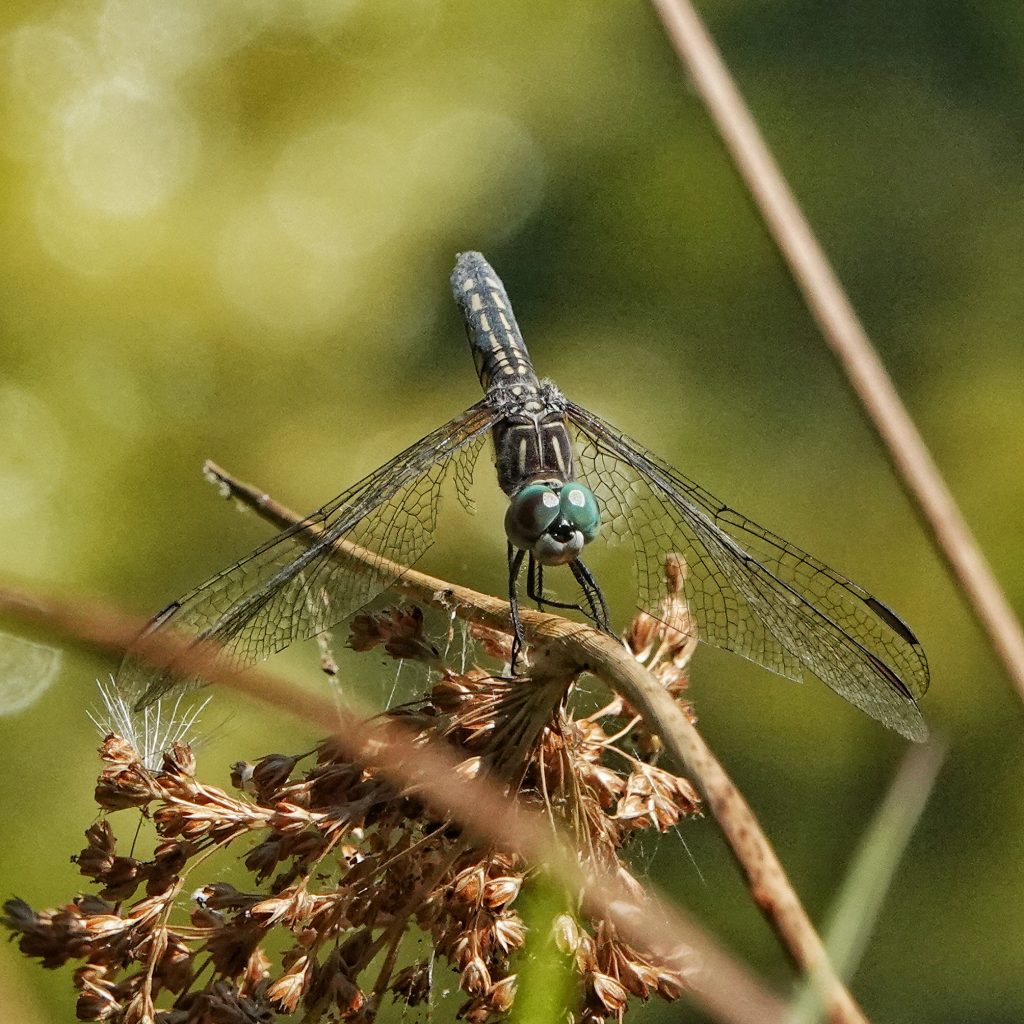
Blue Dasher males are effective predators, capturing prey on roughly 3/4 of their sorties, and are fiercely territorial, although the area they guard is not particularly large. When confronting a conspecific intruder they fly from their perch directly into the face of their opponent, and the two fly rapidly upward. They also try to chase away other, often much larger, species of pruinose skimmers. They perform displays (hovering with raised abdomen) in front of the females, and if she is receptive copulation takes place in the air (occasionally at rest) and lasts 10-40 seconds. Males will guard the female as she oviposits, but seem to lose interest. The female can lay 300-700 eggs in about 35 seconds.
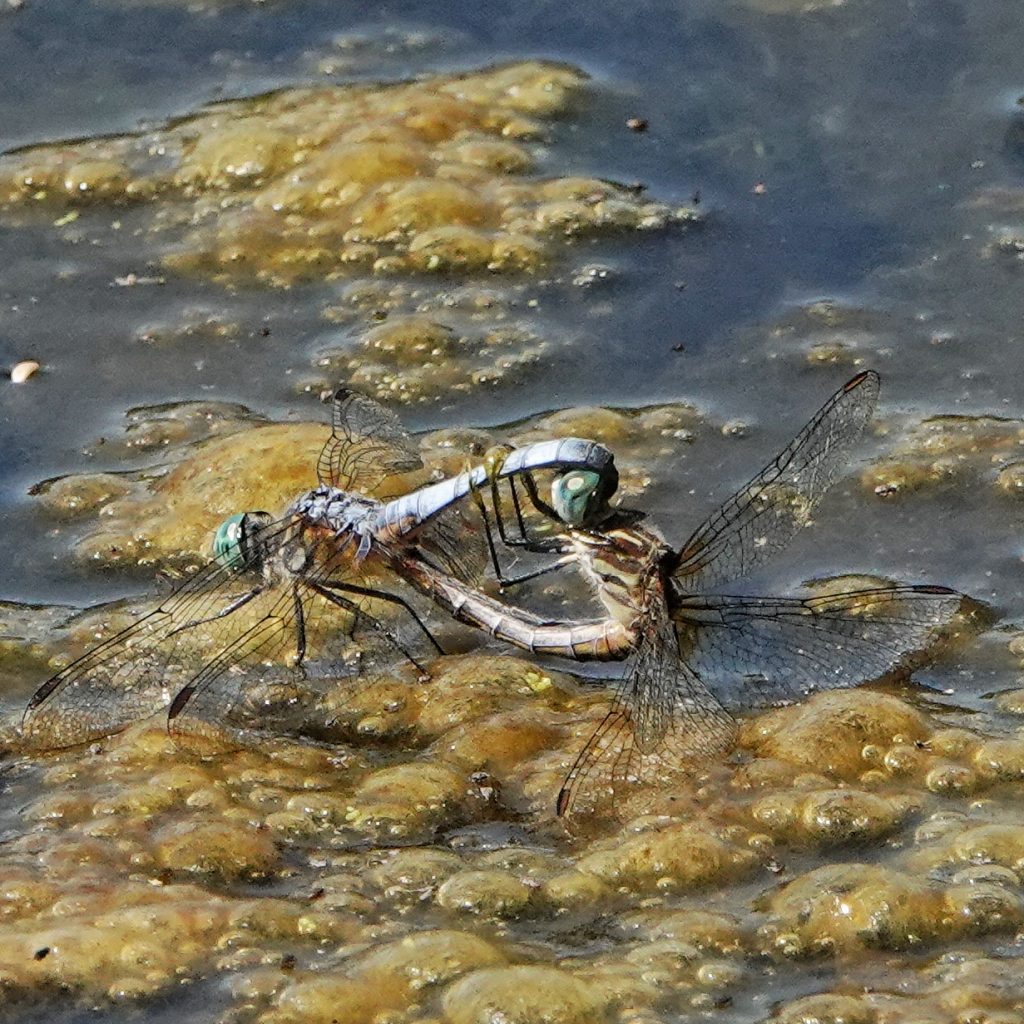
The larvae of Blue Dashers have a higher than normal tolerance for pollution and low oxygen levels, and may at times be the only larvae that can populate a given pond. They seem relatively unaffected by high levels of lead and cadmium, although copper had a strong deleterious effect on survival. They were even relatively unaffected (Parker; 2018) by exposure to the pesticide Roundup, a known toxin for other dragonfly nymphs, although they did capture prey more slowly.
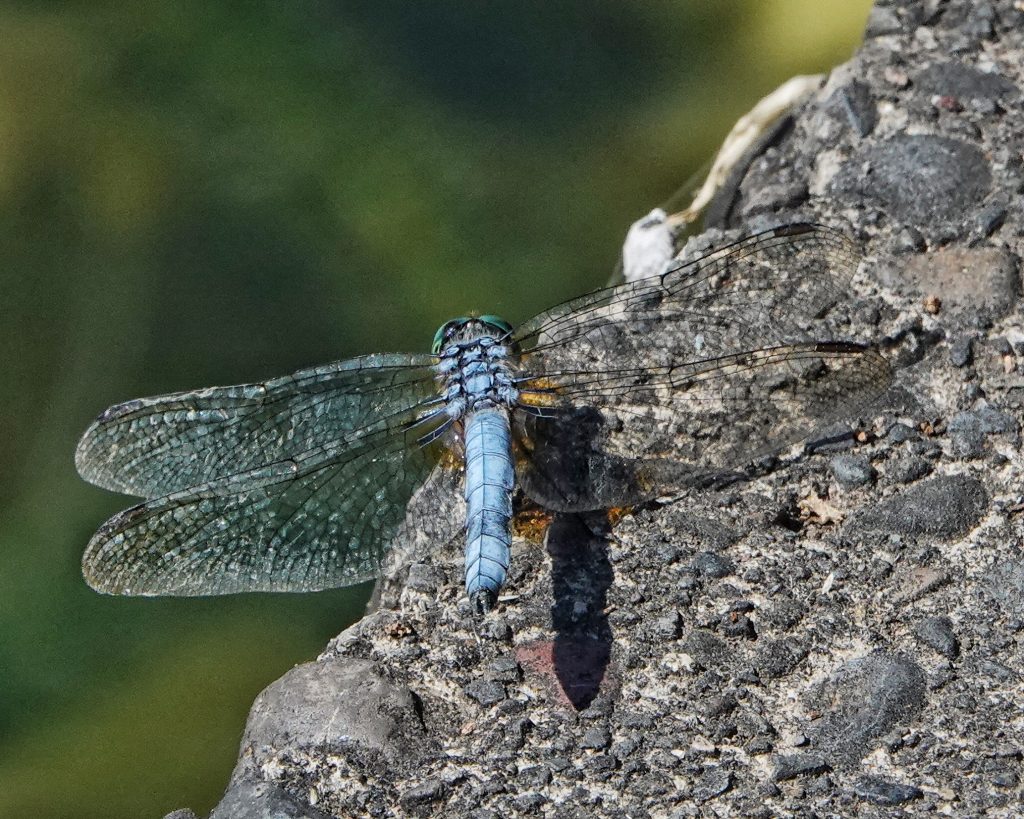
Description-Medium sized (total length 28-45mm, wingspan 60-80mm) dragonfly with a white face, grey green eyes, an area behind the forewing stigma that is free of crossveins and is longer than the stigma, with only 3-4 cells before the next long clear area; often has amber to brown flush near the base of the wings; has a grey green ruff of hair obscuring the back of the head; males are pruinose, blue, usually have a black thorax with green stripes, and the last segment of the abdomen is dark, although both of these traits may be obscured by extreme pruinosity; females and immatures are black and green, with green stripes on the thorax, and 4 rows of green dashes on the abdomen.
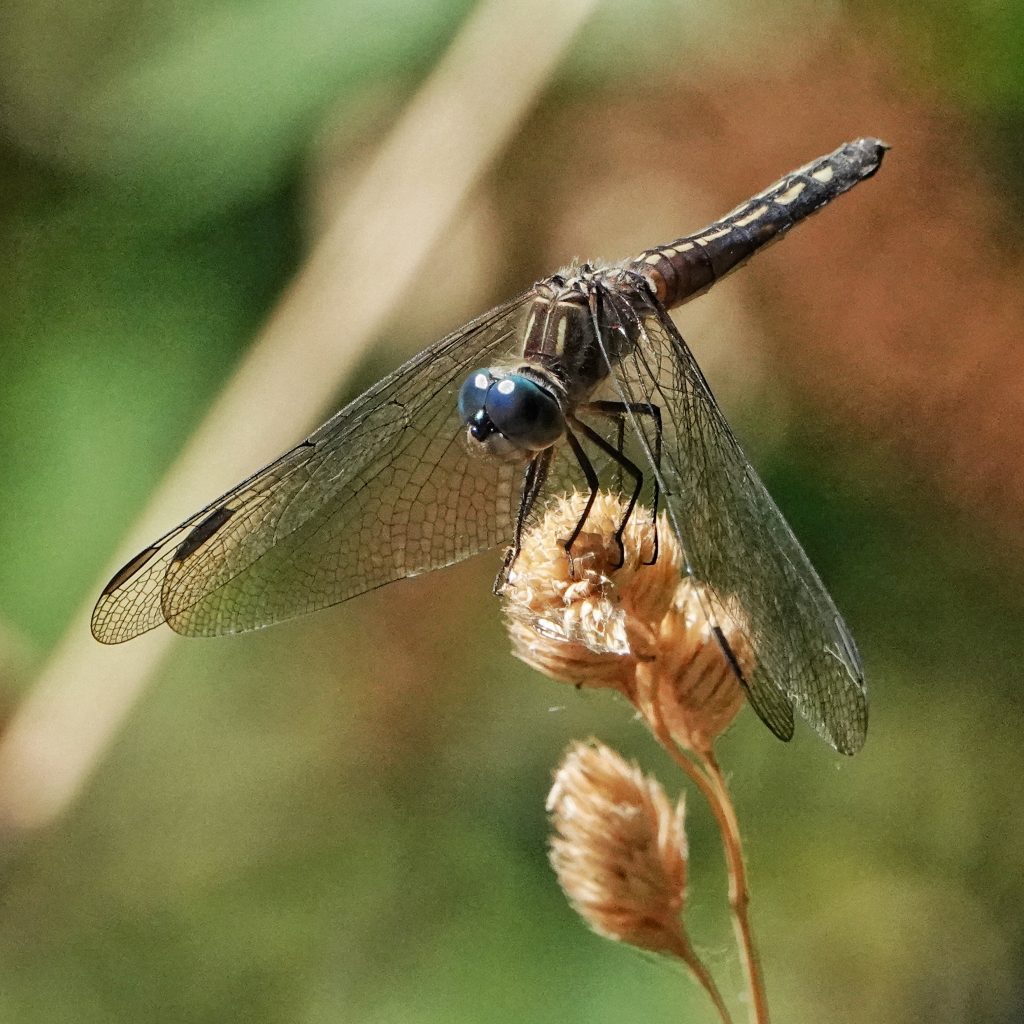
Similar species– Western Pondhawks are medium sized (total length 40-42mm, wingspan 63-68mm) dragonflies with clear wings, a green face, dark blue green eyes, 1-2 crossveins behind the forewing stigma, and 6-8 cells between that area and the next extended clear area; lack thick ruff of hairs behind the head, leaving it exposed; males are pruinose, blue, with an unmarked thorax, and blue pruinosity to the tip of the abdomen; females and immatures are mostly green, with an unmarked thorax, and a single black line running down the center of the abdomen.
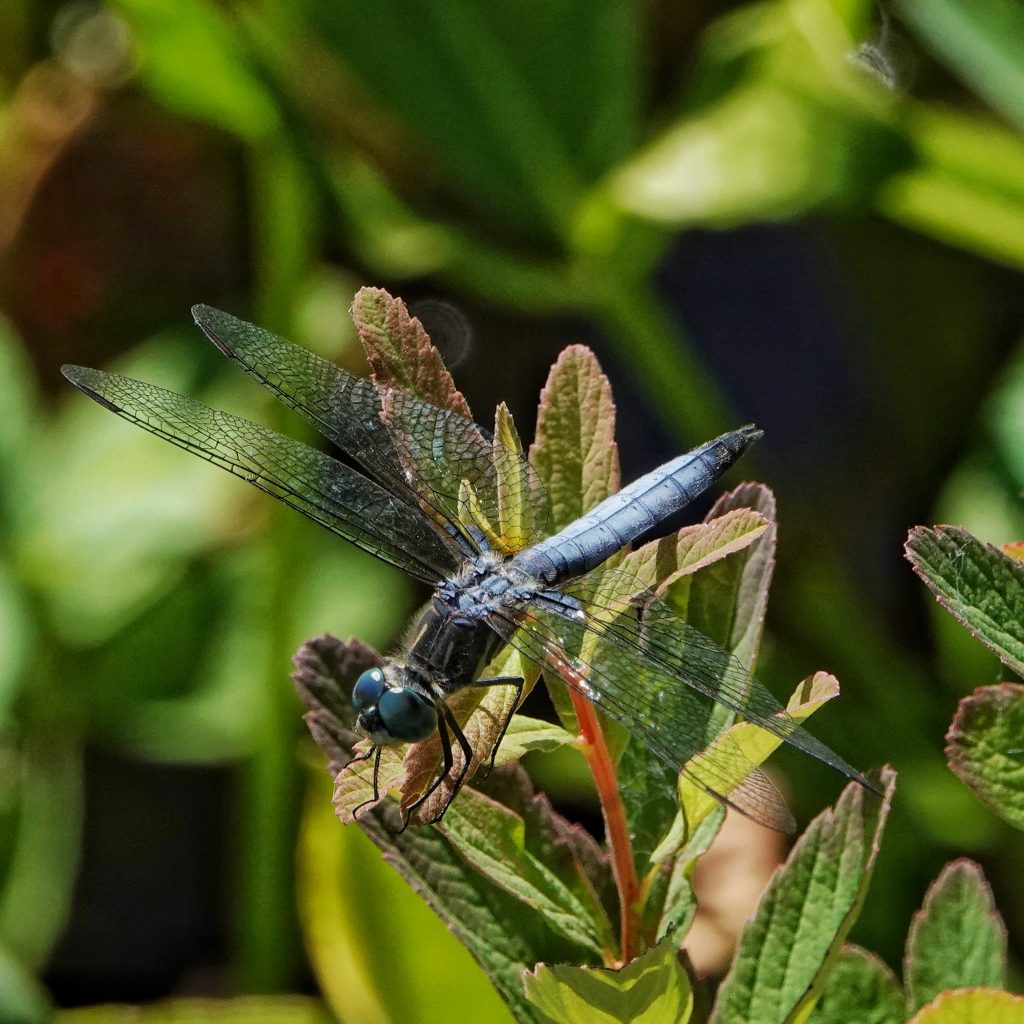
Habitat-Slow to still waters with aquatic vegetation, including ponds, lakes, sloughs, and shallow wetlands, up to 4,000’ elevation; most common below 1,000’ elevation; not usually found a long ways from water.
Range-Most of North America; region wide in appropriate habitat, except mostly absent from se Oregon.
Eats-Nymphs eat anything they can capture and subdue; adults hunt from a perch, and usually take small prey like mosquitoes, midges and other dipterans, and mayflies.
Eaten by-Presumably by insectivores of all classes, probably mostly birds and larger dragonflies for the adults, and fish, waterfowl, large aquatic Hemiptera and Coleoptera, etc for the nymphs.
Adults active-Mid May into October.
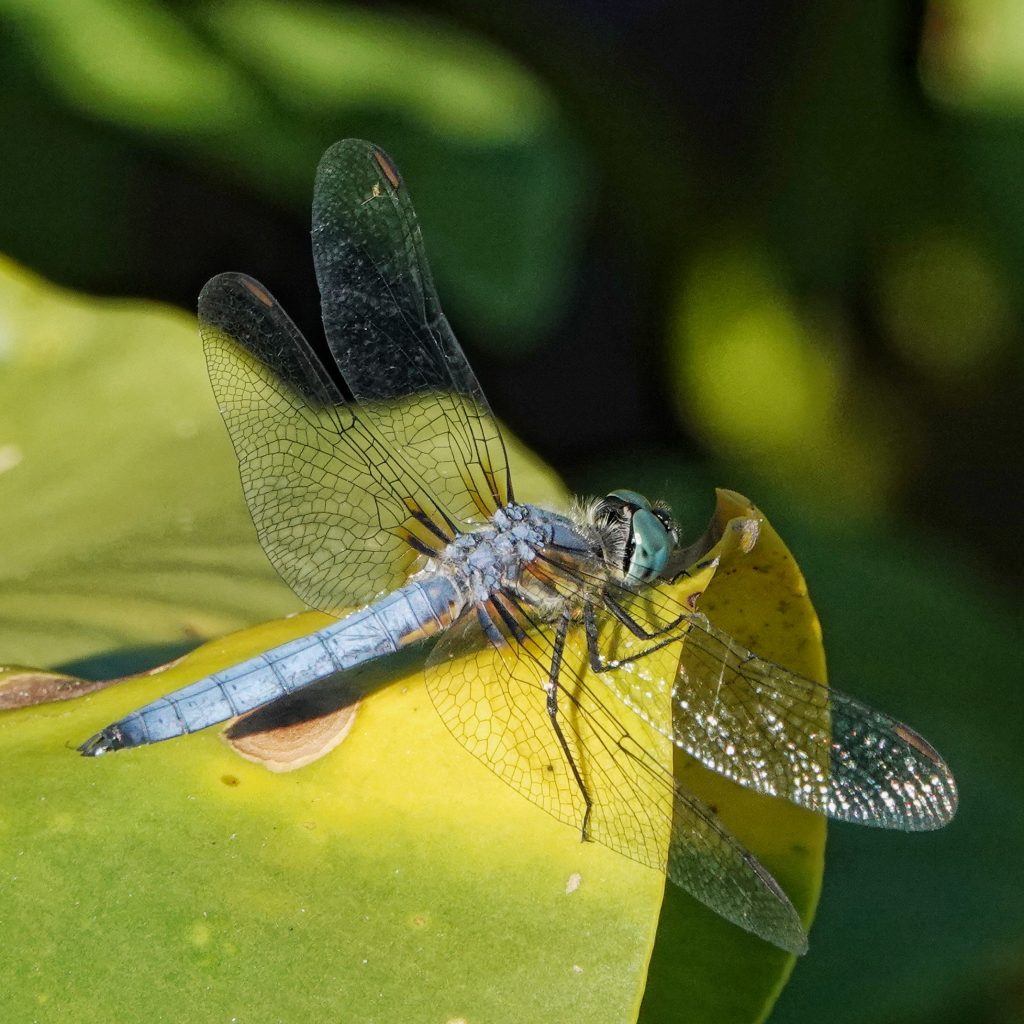
Life cycle-Multivoltine, due to the ability to grow from egg to adult in 2 months; eggs laid on open water surface while flying close to and parallel to the water, bending the abdomen downward without rising between dips; overwinters as nymph in diapause; nymphs hide amongst detritus and vegetation (particularly the leaf axils), but don’t often burrow; reaches sexual maturity about 8 days after energence; adults live about 30 days
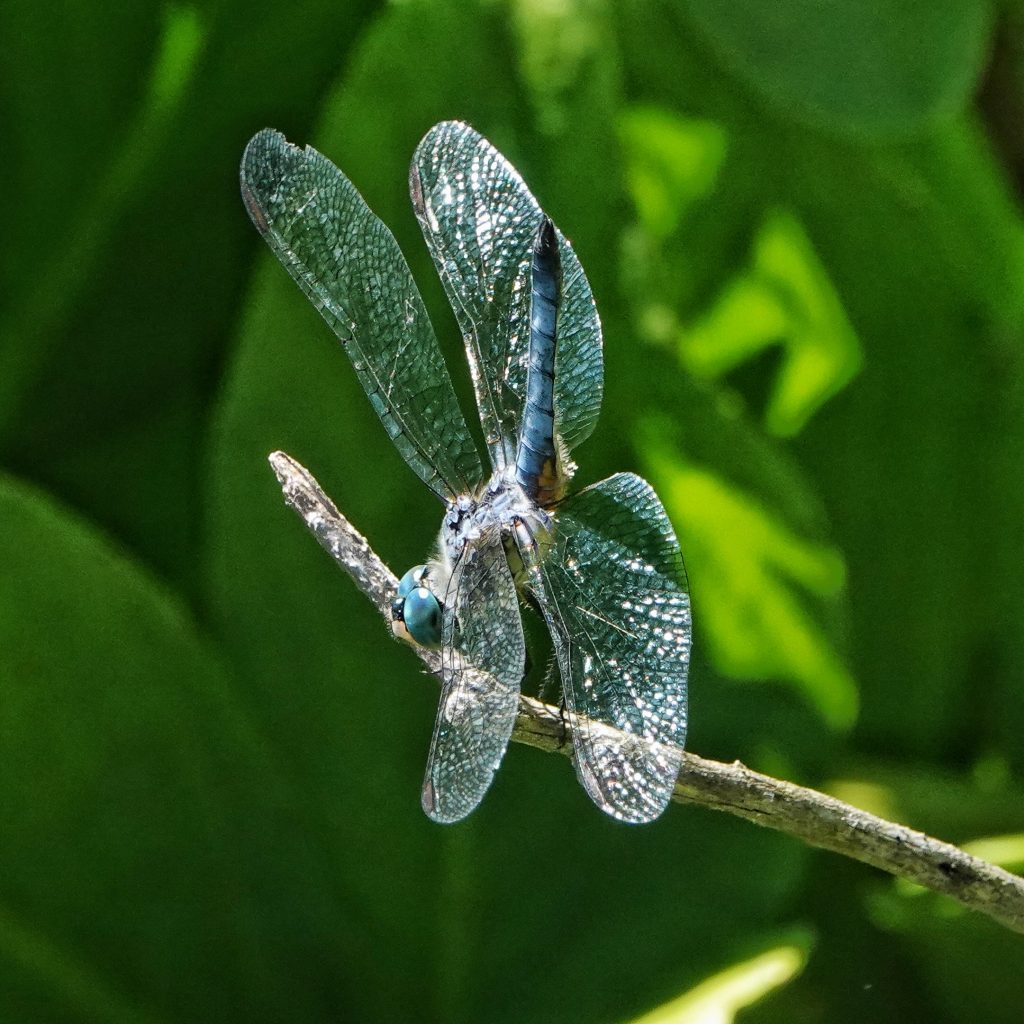
Etymology of names–Pachydiplax is from the Greek words for ‘thick cloak’, presumably a reference to the thick pruinosity for which this genus/species is known. The specific epithet longipennis is from the Latin words for ‘long wings’, a reference to the fact that the short abdomen of the females makes the wings look long by comparison.
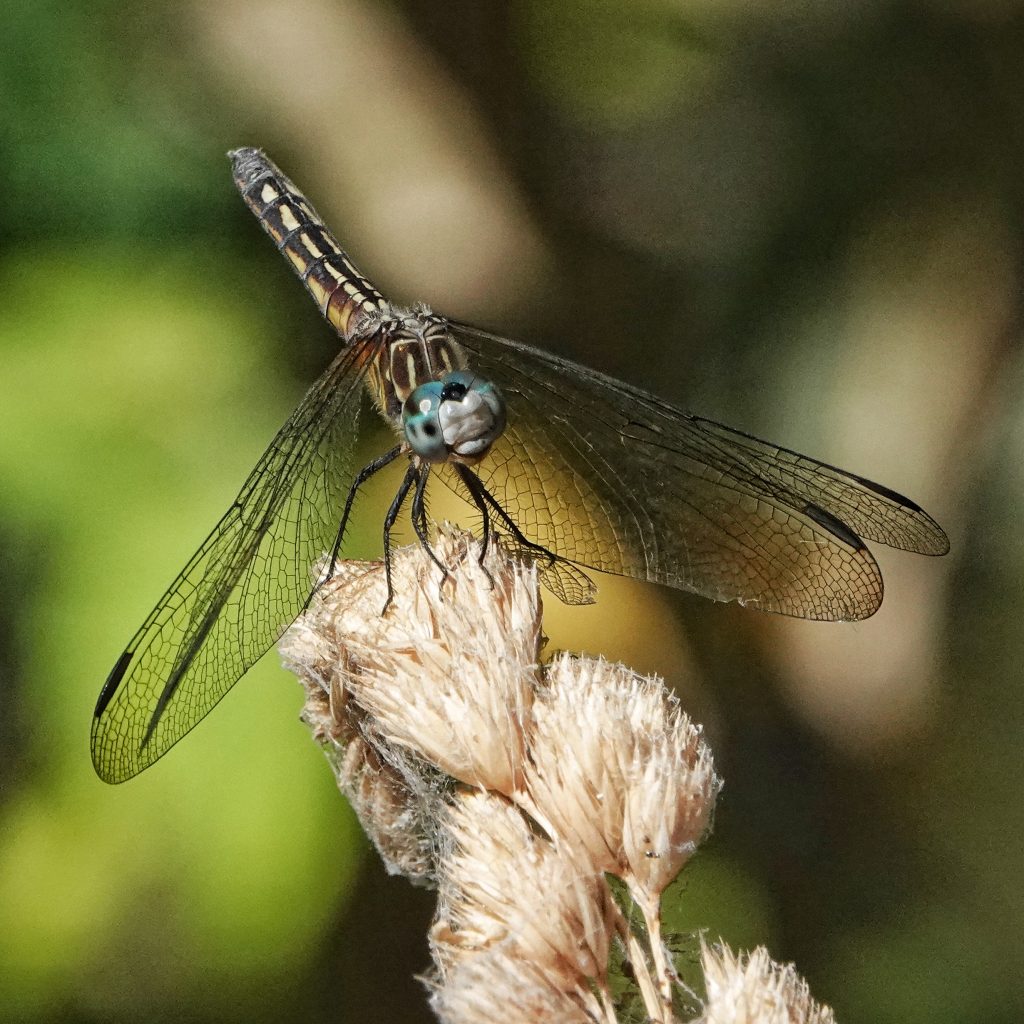
Blue Dasher Dragonflies (Family Libellulidae) – Field Station
Pachydiplax longipennis, Blue Dasher, Family Libellulidae
Species Pachydiplax longipennis – Blue Dasher – BugGuide.Net
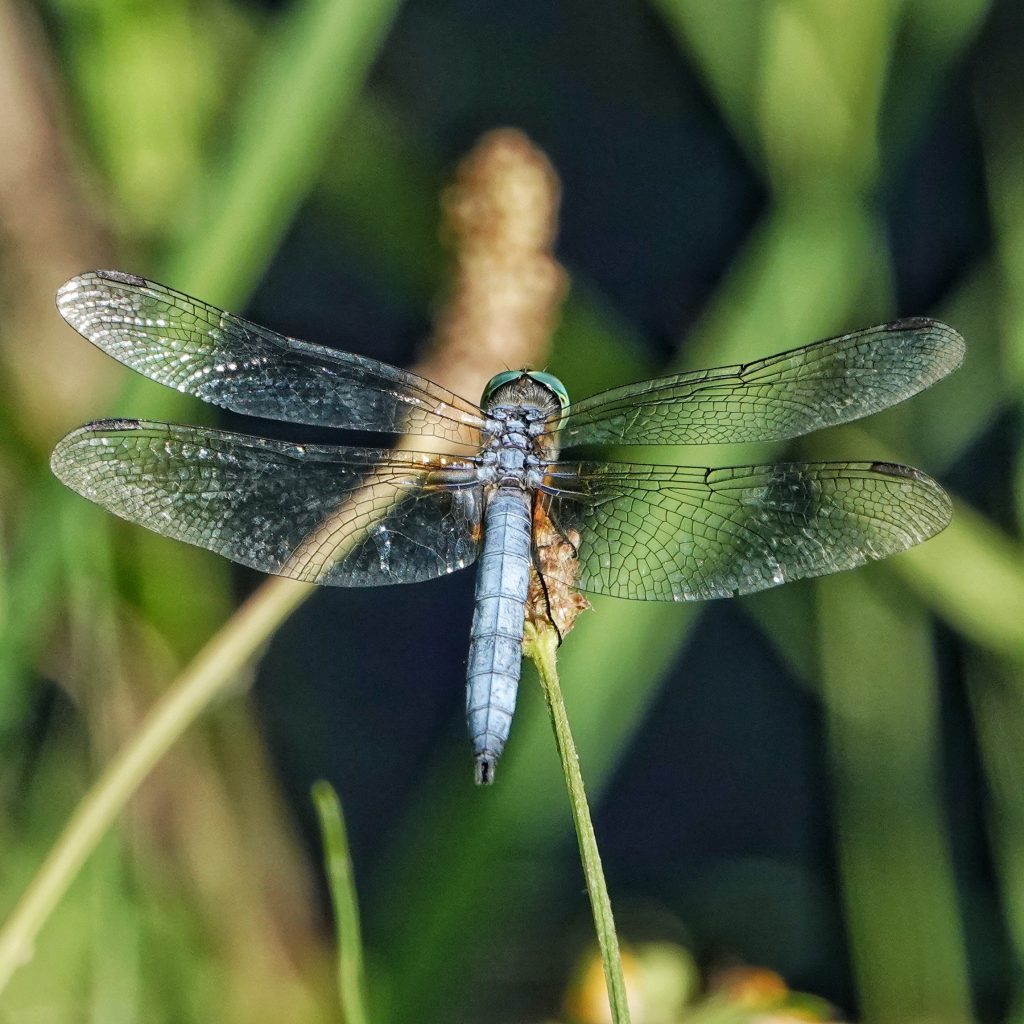
So in all your studies and talking to experts, have you found out what the stigma is for?
Apparently it aids in gliding by being heavier than the surrounding wing and adding stabilization.
https://en.wikipedia.org/wiki/Pterostigma